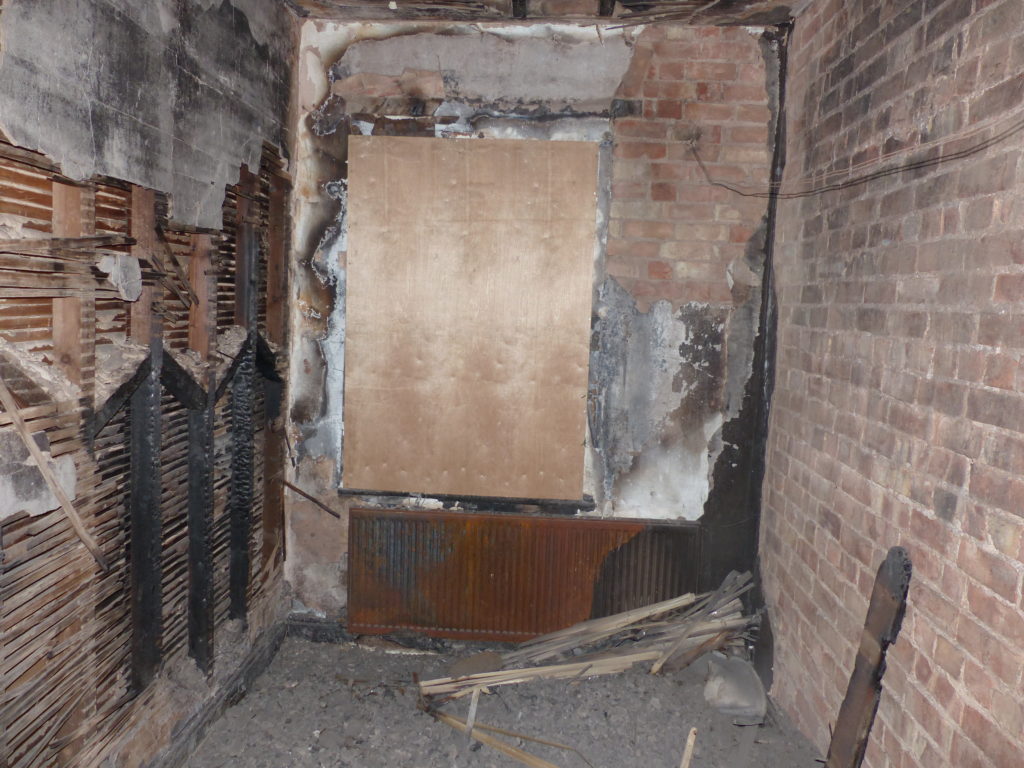Sod’s Law
So another makeshift pot factory in a rental property goes up in smoke (no pun intended). Dodgy electrical alterations to bypass the meter spark a fire that makes the whole town ill from the fumes. No need to panic though, right? Building insurance is in place. We’ll be back on our feet in no time once we’ve suffered the obligatory 45-minutes of elevator music whilst on-hold to the insurance call centre.
Only there’s a major problem – you’ve insured the building based on its market value. This may seem like the obvious thing to do when completing your proposal forms but this is a catastrophic error. When insuring a building you need to cover the cost it would take to rebuild the entirety of it from scratch – not what it’s worth standing. There could be a chasm between these two figures greater than that which separated Lazarus and the Rich Man. Here’s an example:
- A 3-bedroom terraced house near Goodison Park has a market value of £60,000 (on a good day). The house promptly gets insured for £60,000.
- Using current market figures, the cost of demolishing the house and rebuilding it from scratch to current standards and statutory requirements is £150,000. (Known as the Value At Risk.)
- The house is therefore under-insured by 60% ((60,000 / 150000) x 100 = 40% Value At Risk covered.)
In recent years Lynwoods has unfortunately had to deal with numerous cases of under-insurance where property owners have been left with paltry – but perfectly legitimate – insurance reimbursements that do not cover the cost of putting the property back to where it was before the disaster struck. Using the above example, a typical scenario looks like this:
- A 3-bedroom terraced house near Goodison Park is under-insured by 60% and is severely damaged by a burst water main while the family are at Pontins.
- The damage is professionally assessed and quantified, and tendered to three local contractors. The most competitive quotation to repair the damage is £35,000.
- The terms of the insurance agreement oblige the insurer to make a pro-rata payout based only on the actual Value At Risk covered.
- The homeowner receives a reimbursement of £14,000 to reinstate the property – a shortfall of £21,000.
Making this basic insurance valuation error could have disastrous consequences if the unthinkable happens. While most victims fall into this trap simply by ignorance, some we’ve experienced have deliberately under-insured their properties because it meant saving £8 on their monthly premiums. Insanity. Insurance companies rely upon the information that you give to them when assessing the risk they are taking. If you fail to provide them with a realistic appraisal then you’re exposing them to a much greater risk than you’re compensating them for with your insurance premiums.
If you want to avoid these problems then please contact Lynwoods for expert advice before taking-out an insurance policy and we’ll provide you with a professional and realistic Insurance Reinstatement Valuation to make sure that you’re adequately covered. We also strongly advise our clients to review their Value At Risk annually and to adjust their cover accordingly. Construction prices aren’t getting cheaper – they get more expensive year on year and your insurance cover needs to adjust periodically to match the price inflation.
It may never happen to you … but then, Sod’s Law …



Would you like to share your thoughts?
Your email address will not be published. Required fields are marked *